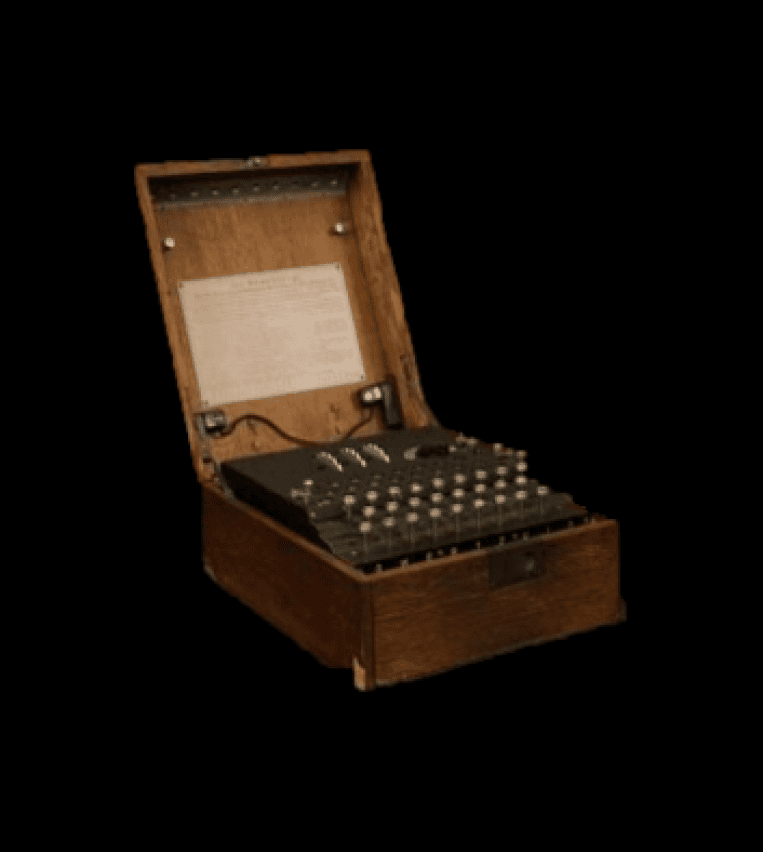The “Enigma” device, in World War II
During World War II the Germans exchanged coded messages with the “Enigma” device. It was a typewriter-like device that had one sender and one receiver. This machine changed the letters you typed with other letters. If you typed the letter F, for example, the letter S was printed. But if you typed the letter F again, it was not the letter S that was printed, but a different letter was printed. The correspondence of the letters changed with each typing. In order for the recipient to decipher the message, he had to have placed some wiring and some components of this machine in the same way as the sender had placed them. The Germans changed the wiring and components at regular intervals, so even if the Allies had the “Enigma” machine, if they did not know the correct placement they were unable to decipher the messages they intercepted.
The British turned to the mathematician Alan Turing who was known for his work on “algorithms” and the famous “Turing machine“, which was theoretically capable of calculating anything that could be calculated algorithmically.
Turing formed the Group of “Hut 8” who, without breaks and sleep, in a secret location, tried to crack the code of the “Enigma” machine. For this purpose they built the first digital computer, the “Colossus Mark I” which was much larger than a whole room. Alan Turing is considered the father of today’s computers.
The “Hut 8” team had not made significant progress until someone on the team thought that if they had an array of consecutive letters they could more easily decode the messages they were intercepting. Then, by taking a closer look at these messages, they noticed that at the end of each message two words were repeated in all of them. Then they realized that those words were the phrase: “High Hitler”. That was it. They set up the “Colossus Mark I” based on those words and cracked the code. This success was kept secret and played a significant part in the positive outcome of the war.
After the war, on February 19, 1946, Turing presented the first complete design of a computer.
In 1949 he worked on the software for one of the first computers, the “Manchester Mark H”. He also worked on the idea of artificial intelligence, and proposed an experiment known today as the “Turing Test” to determine when a machine could be called “intelligent”.
The end of Turing: In 1952, after a betrayal by his lover, Turing was accused of “sexual perversion” and “homosexuality”. In court, he did not defend himself. His sentence was either to go to jail or have estrogen injections for a year. He accepted the second and continued his research on morphogenesis, quantum theory and relativity.
Turing committed suicide on 7 June 1954 at the age of 42 by eating an apple containing cyanide. It is rumored that the company “Apple” created the logo with the bitten apple to honor his memory.


